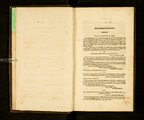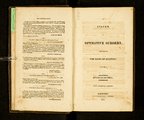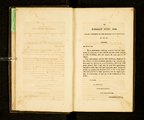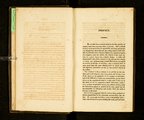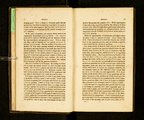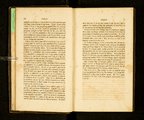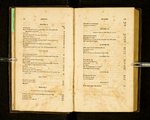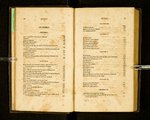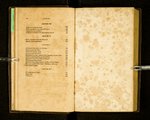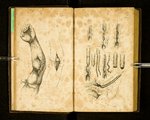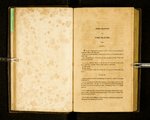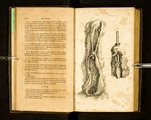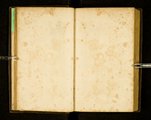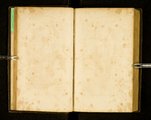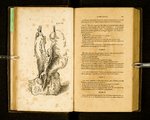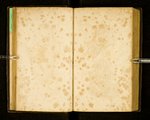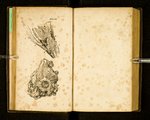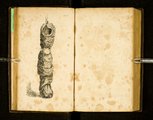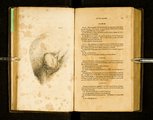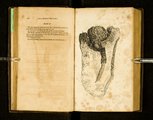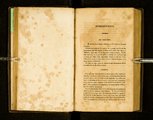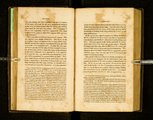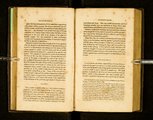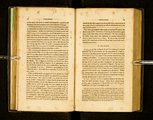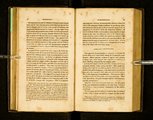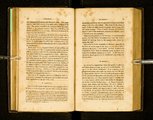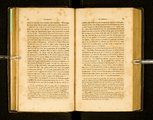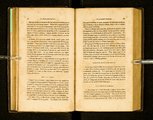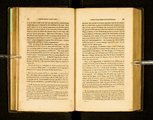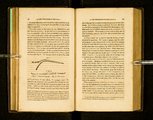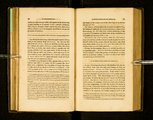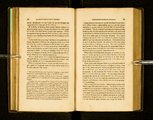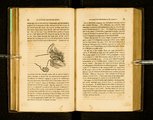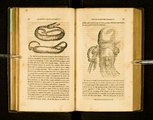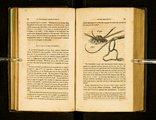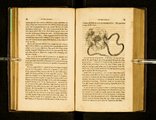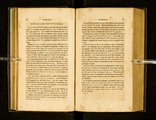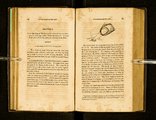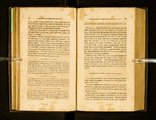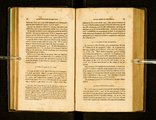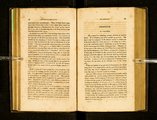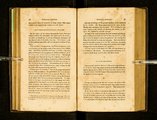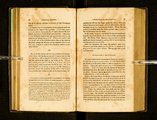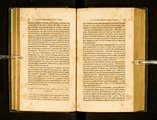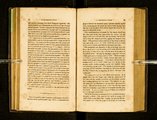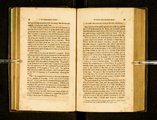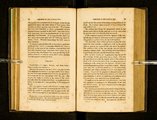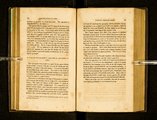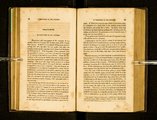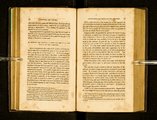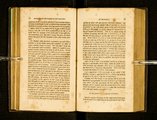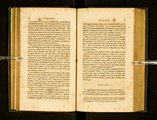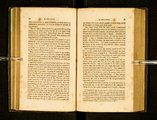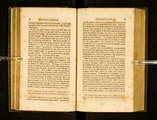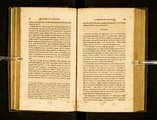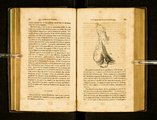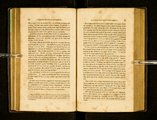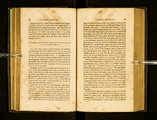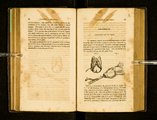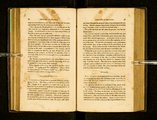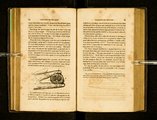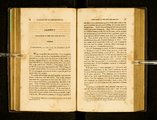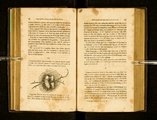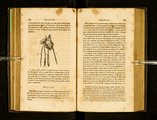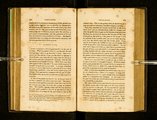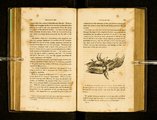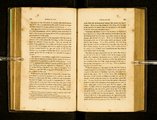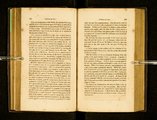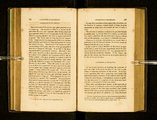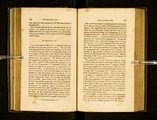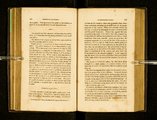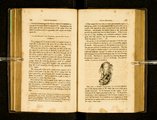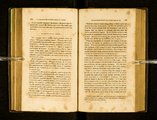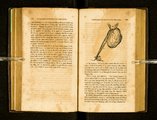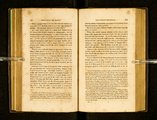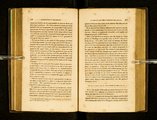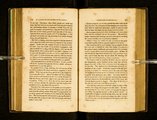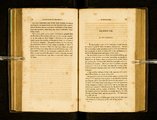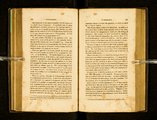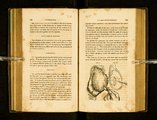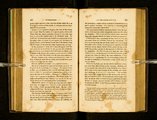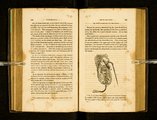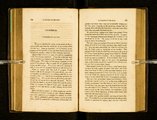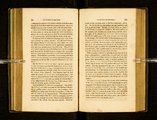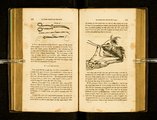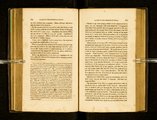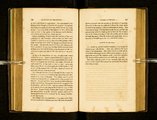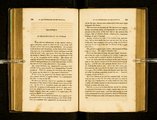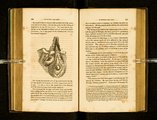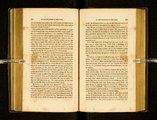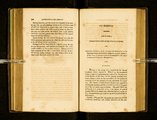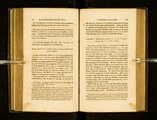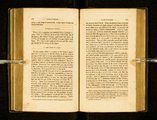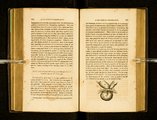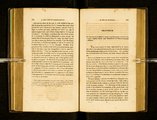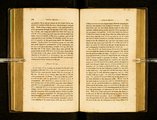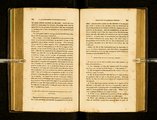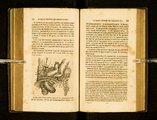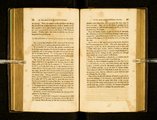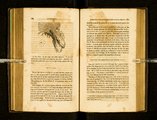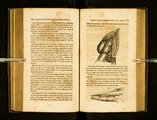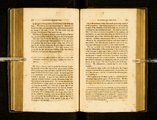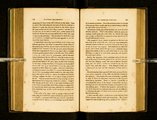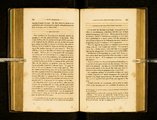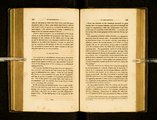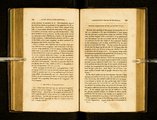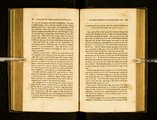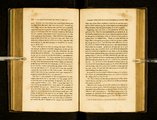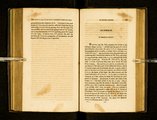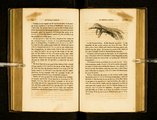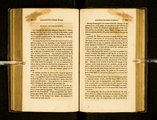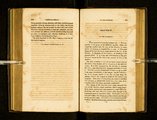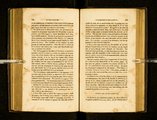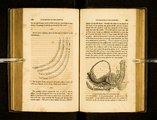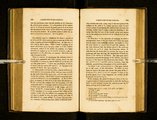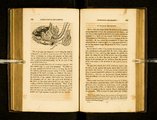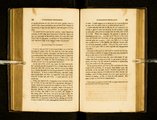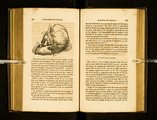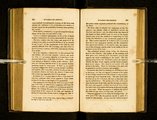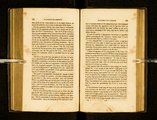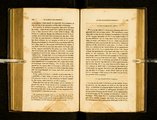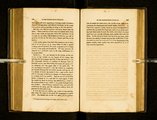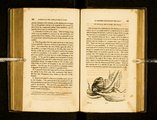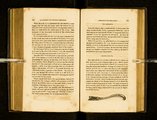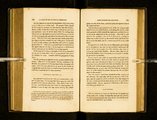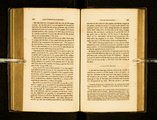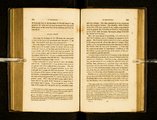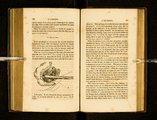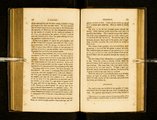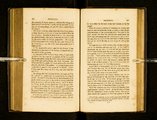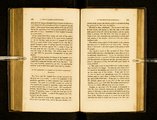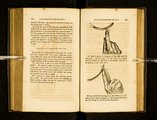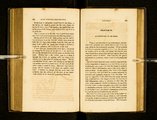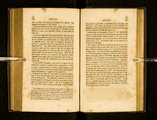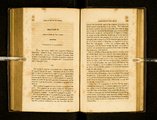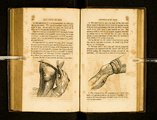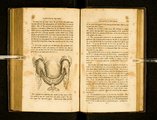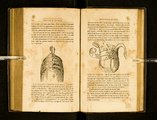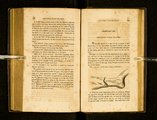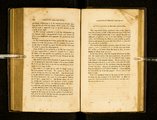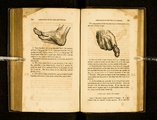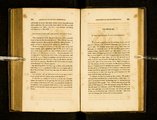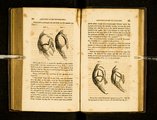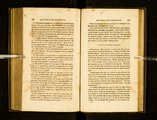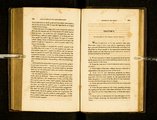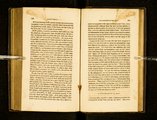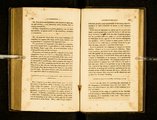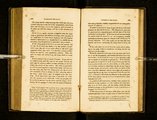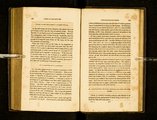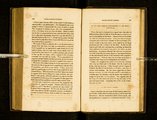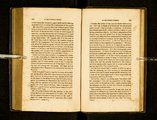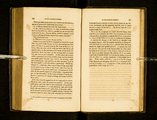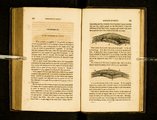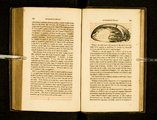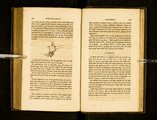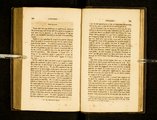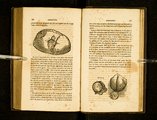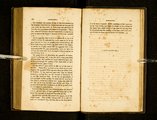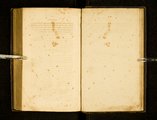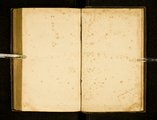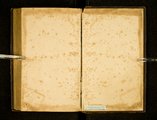| OCR Text |
Show POPLITEAL ANEURISM. consnnusncas or "nu: OPERATION. side of the muscle, and turn it outward, to find the femoral artery. perhaps, as will let the finger under the artery: then pass A surgeon, who is no anatomist, will find himself a little dill ficultcd in this stage of the operation. I have seen such a dle being cut on", two ligatures are formed. We tie the one as high as possible upon the artery, and the other 3.3 low,We cut the artery betwixt them. In Mr. Astley Cooper's observation, the ligature was thrown from the end of the artery; by the force of the arterial pulsa‘ tion. Mr. Henry Cline, therefore, has proposed to put the y of: man cut, unscrew the tourniquet, out again, unscrew the tourniquet, and look confused, stupid, and irresolute. I have seen a very intelligent surgeon, take the aponeurosis, covering the artery for the dilated artery itself. I have seen another look first on one side of the sartorius muscle, then on the other for the artery, enlarge his incision, cut the collateral arteries, and. as it were, contrive to perform in a bungling manner a very simple matter. III. I under it the aneurismal needle with a double thread; the nee. needle and thread through the artery, after tying the ligature, and then to tie it a second time. , After the operation a few hours, the patient's pulse rises. The lower part of the thigh and knee has to me appeared to acquire an unusual degree of heat. The leg and foot is cold and benumbed. We cut into the fasciaa‘: and slit it up, and then seize the pulCONSEQUENCES OF THE OPERATION. " '3‘" .- WJJUW mum H rating artery with the fingers, and lift it from its bed of cellular membrane ; and to separate it from the vein and nerve, use only the handle of the knife, or end of the probe. We now pass a probe under it, if we intend to tie it twice and cut it between, as I would recommend should be done: but if we Tnn most unfavourable circumstance during the operation, is to find the artery crisp and diseased : we have then to dread the ulceration of the artery, before it shall be closed above th . ligature. This is the most common cause of failure after this mean simply to tie the artery, as proposed by Mr. Hunter, we operation. As far as I have seen, the danger of this is dur- have only to pass the aneurism needle under it and to tie it once, and close the wound, leaving the ligature hanging out]: p_,_ .._"‘-1'- _.,, , _, I: . - .. . _ ._v--.-.-. , .ur ,5". F17... "V‘NL. ..__.. IV. If the artery is to be out, and this I recommend, we separate it somewhat more from its bed of cellular membrane ; as mucln " The fascia must be known to the surgeon in dissection : it is that which spreads from the insertion of the triceps, and. the origin of the pastas inter/mo- T Mix Lynn, ofthe "Westminster hospital, has performed the operation for" ancurism in the fore part ofthc thigh, eleven times in Mr. Hunter's manner . ing the period from the tenth to the fifteenth day after the operation. To guard against immediate death from this, the tourniquet must be kept on the limb. Next to the hrcmorrhagy, the danger of gangrene presents itself to the surgeon's mind. I do not think that the cause of it is generally understood; at least in the only two instances which I have seen, the cause was one which I do not recollect to have been mentioned, viz. the inflammation and distension ‘eonsequent upon the suppuration of the tumour behind the knee. 'vVhere the tumour has been small, and the oedema and only one ot'tlic patients he lost from immorrhagy, owing to the bursting; He argues thus : " when I have dissected the arteries of the slight, I have no fear for the re-establishment of the circula- thigh in the dead body, I find that on bending the thigh, the arteries hang tion of the limb ; but when the circulation seems perfectly es tablished a few days after the operation, and there comes great. ofthc artery. loose, and are too long- for the thigh, and do not keep their places ; their fore, I conceive that alter the operation t" - .rurism, I am enabled by man: ugingthc positionoi‘thr high alone, keeping it easily relaxed, to {EEG 5'31; Lsoczlem hr the artery to contract without cutting it. across " distension about the knee, and the tumour in the ham becomes large and film, when the oedema in the leg and foot dozs not vol. 1. x i. mm 10 v. MMIIIJ |




